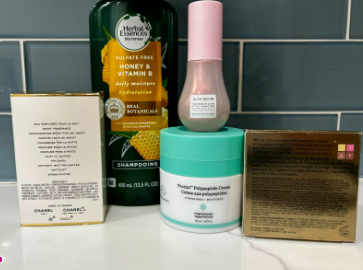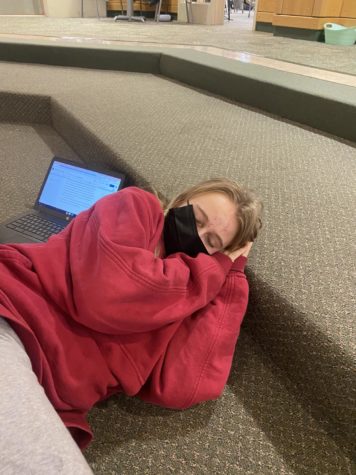Comparing The Three COVID-19 Vaccines: Moderna, Pfizer, Johnson and Johnson

April 1, 2021
In February of 2020 the first case of COVID-19 was reported in the United States. By mid-March there had been at least one COVID-19 case reported in all fifty states. Only nine months later on December 14th of 2020 the first vaccine was administered to a healthcare worker in New York City. Sandra Lindsey, an ICU nurse at Long Island Jewish Medical Center, received the Pfizer vaccine. After receiving the shot, Sandra stated, “I trust science. What I don’t trust is getting Covid-19, because I don’t know how it will affect me and the people around me.”
On December 23rd, 2020, an article from Pizer.com explains, “The U.S. government orders 100 million additional doses of the Pfizer-BioNTech COVID-19 Vaccine bringing total doses for the U.S. to 200 million. All 200 million doses expected to be delivered by July 31, 2021, allowing for 100 million people in the U.S. to be vaccinated.” The Pfizer vaccine requires two shots, given about 21 days apart from each other. The shot, given in the upper arm, is only recommended for people aged 16 and older. An article from Phizer.com reported that some individuals may have mild side effects after receiving the vaccine. These side effects include pain, swelling, redness (in arm), chills, tiredness, headaches (in the rest of your body). The article stated, “These side effects usually start within a day or two of getting the vaccine. They might feel like flu symptoms and might even affect your ability to do daily activities, but they should go away in a few days.” The Pfizer vaccine was 95% effective in preventing the COVID-19 illness in people without evidence of previous infection. It is 52.4% effective after the first dose (the percent increases over 2 weeks), and 92.6% effective after receiving both doses. When asked which vaccine he would choose to receive, my father, David Morrow, stated, “I would choose Pfizer because the period of time between the first shot and the second shot is three weeks as opposed to four for Moderna. I would not choose Johnson and Johnson because I just do not know that much about it.” Many people receive the Pfizer vaccine everyday!
An article from the United States Food and Drug Administration explained, “On December 18, 2020, the U.S. Food and Drug Administration issued an emergency use authorization (EUA) for the second vaccine for the prevention of coronavirus disease 2019 (COVID-19) caused by severe acute respiratory syndrome Coronavirus 2 (SARS-CoV-2). The emergency use authorization allows the Moderna COVID-19 Vaccine to be distributed in the U.S for use in individuals 18 years of age and older.” The Moderna vaccine requires two shots. The shots are given in the muscle of the upper arm about twenty-eight days apart. The Moderna vaccine is only recommended for people eighteen years or older. Some individuals may experience side effects within seven days after receiving the vaccine, however, they are mostly mild and moderate. The side effects include pain, swelling, redness (in arm) and chills, tiredness, headaches (in the rest of your body), which are all very similar to the possible side effects of the Pfizer vaccine. An article from the CDC stated, “Side effects (such as fever, chills, tiredness, and headache) throughout the body were more common after the second dose of the vaccine. Most side effects were mild to moderate. However, a small number of people had severe side effects that affected their ability to do daily activities.” The Moderna vaccine was 94.1% effective at preventing COVID-19 after receiving the second dose. When asked which vaccine she knew the most about, my mother, Denise Morrow, replied with, “I have heard the most about Moderna because when the vaccines first began to come out, the media seemed to cover Moderna the most.” Moderna was one of the first vaccines to be released and has been received by many, including Dr. Fauci.
At the end of February the Johnson and Johnson vaccine was approved. The Moderna and Pfizer vaccines are very similar, as they both require two shots. The latest Johnson and Johnson vaccine only requires one shot, given in the upper muscle of your arm. This is very appealing for some. Denise Morrow says, “I would really like to get the Johnson and Johnson vaccine because it is only one shot, so it makes it very convenient.” The Johnson and Johnson vaccine lessens the symptoms of COVID-19. An article from Forbes states, “In the U.S., studies found that the vaccine was 72% effective at preventing moderate Covid-19 and 86% effective at preventing severe Covid-19.” The vaccine has very similar side effects to the Pfizer and Moderna vaccines, which include arm pain, redness at the site of injection, fatigue, and headaches. The Johnson and Johnson vaccine was the last out of the three available vaccines to get approved, but it is being distributed quickly!
In just one year, a vaccine was made, approved, and distributed. We have conquered so much in such little time. All three vaccines and have the same end goal in mind. Overall, when considering which vaccine to choose, I think that it ultimately all comes down to preference and availability.






